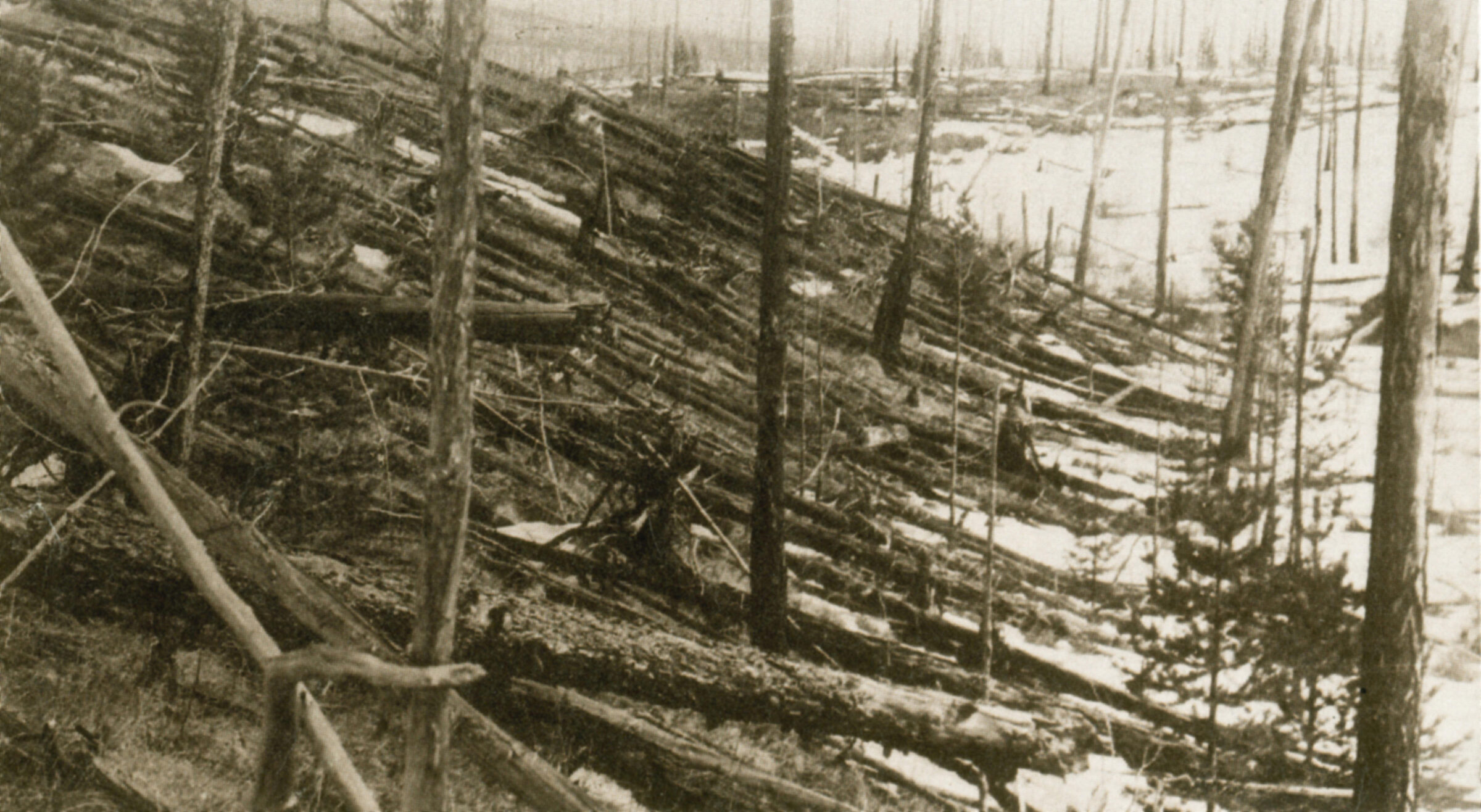Notable Asteroid Impacts in Earth’s History
Throughout Earth’s history, there have been many instances of near-Earth objects (NEOs) impacting our planet, either reaching the surface or exploding above ground from the intense energy released as the object passed through the atmosphere. Asteroid impacts are natural processes that shape the surface of our planet, like volcanoes. The vast majority of these impacts were from very small objects, but there have been some remarkable exceptions.
The Chelyabinsk Event
In 2013, an asteroid about 20 meters in diameter entered Earth’s atmosphere above the city of Chelyabinsk, Russia. It exploded while it was still in the air, releasing the same amount of energy as 500 kilotons of TNT. Luckily it exploded about 30 kilometers above ground and did not cause direct impact damage. Still, it created a shockwave that injured 1,500 people and damaged 7,200 buildings across six cities. Most of the injuries were caused by curiosity: people saw the bright flash and walked to windows to look outside. The shock wave, traveling at the slower speed of sound, arrived later and shattered the windows, injuring people with flying glass.
The Tunguska Event
In 1908 an approximately 30-meter-diameter asteroid or comet entered the atmosphere and exploded above ground in Tunguska, Russia. The explosion knocked down approximately 80 million trees over an area of 2,150 square kilometers (830 square miles). This explosion has been estimated at 1,000 times more powerful than the explosion of the atomic bomb at Hiroshima. Had this taken place over a metropolitan area, that city would have been completely destroyed. Luckily, it happened in a remote area of Siberia, and nobody is thought to have been killed.

The Chicxulub Event
65 million years ago an asteroid roughly 10 to 15 kilometers (6 to 9 miles) in diameter hit Earth in what is now Mexico. The impact killed 70% of all species on Earth, including the dinosaurs.
An impact of that size would have had devastating effects, and the geological record gives us some indication of what happened. The asteroid hit in water, creating mega-tsunamis reaching from southeastern Mexico all the way to Texas and Florida and up a shallow interior ocean that covered what is now the Great Plains. The blast would have thrown chunks of the asteroid and Earth so far that they would have briefly left the atmosphere before falling back to the ground.
Like millions of shooting stars, all this material would have been heated to incandescence upon re-entry, heating Earth's surface and igniting wildfires. It is possible that all of Earth’s forests burned. Meanwhile, colossal shock waves would have triggered global earthquakes and possibly volcanic eruptions. A cloud of super-heated dust, ash and steam would have spread from the crater as the impactor slammed underground in less than a second. This dust could have covered the entire surface of Earth for up to a decade, creating a harsh environment for living things. Perhaps more significantly, the dust could also have lingered in the atmosphere, blocking out the Sun and interrupting the photosynthesis of plants that the entire food chain depends on, as well as cooling the temperatures of the Earth for many years.
The Next Event?
Although immense impactors like the one that devastated the entire planet 65 million years ago are rare, NEOs of many different sizes can pose serious threats. An impact on or over a densely populated city could cause millions of deaths, and an impact on water could cause massive flooding on coastlines. Any major impact would lead to widespread damage, injury, and death, and would create unparalleled humanitarian and refugee crises around the world.
Defending the Earth from Impacts
Asteroids and comets that come close to Earth can pose a very real threat to our planet, but impacts from these objects aren’t inevitable. With proper planning we can prevent this natural disaster from happening.


 Explore Worlds
Explore Worlds Find Life
Find Life Defend Earth
Defend Earth



